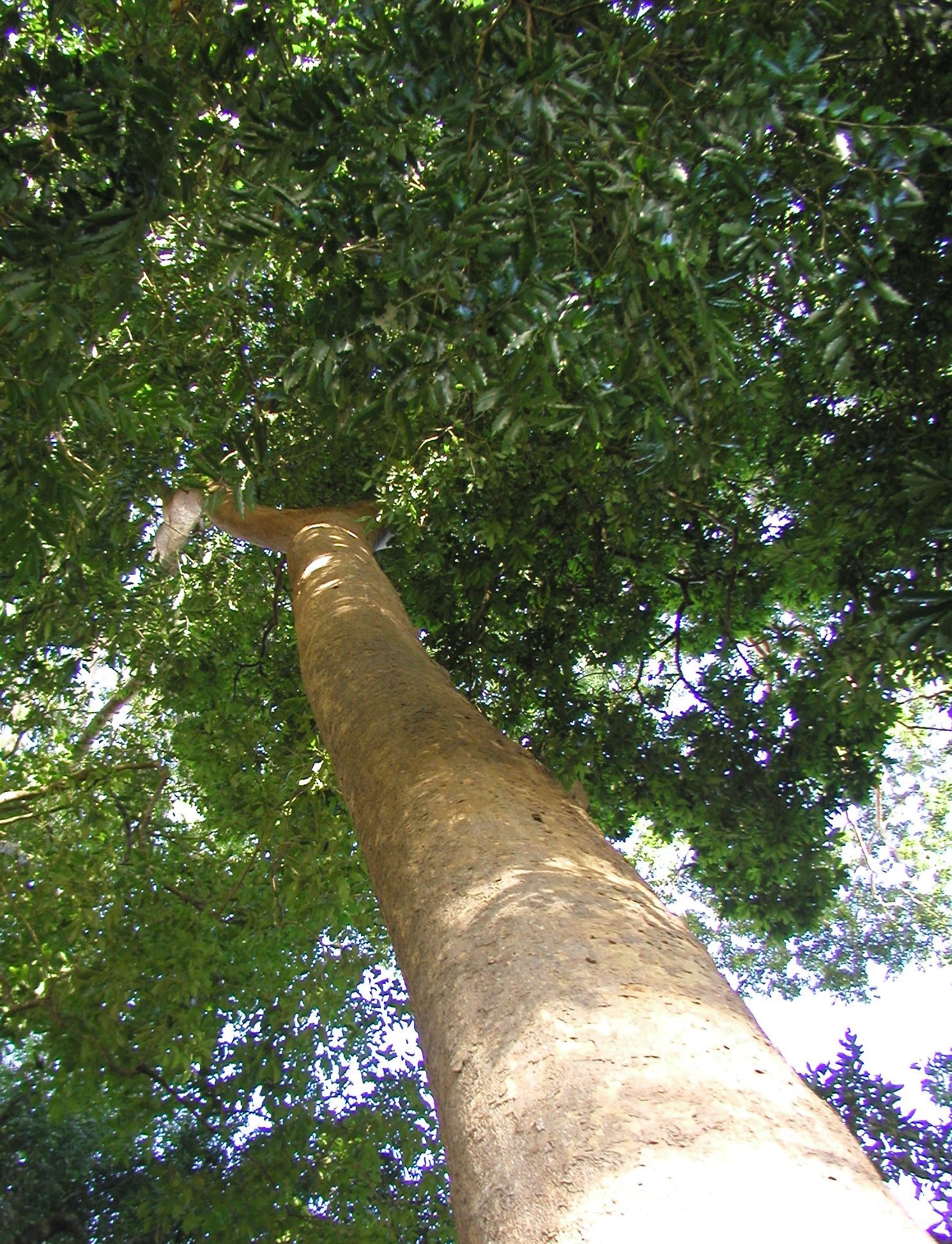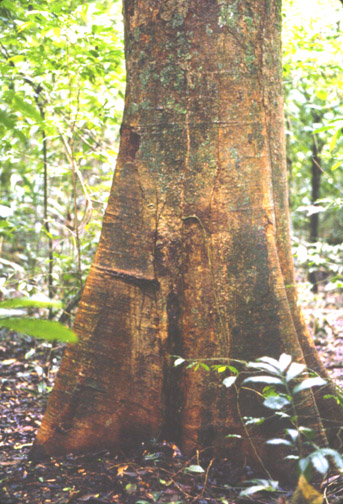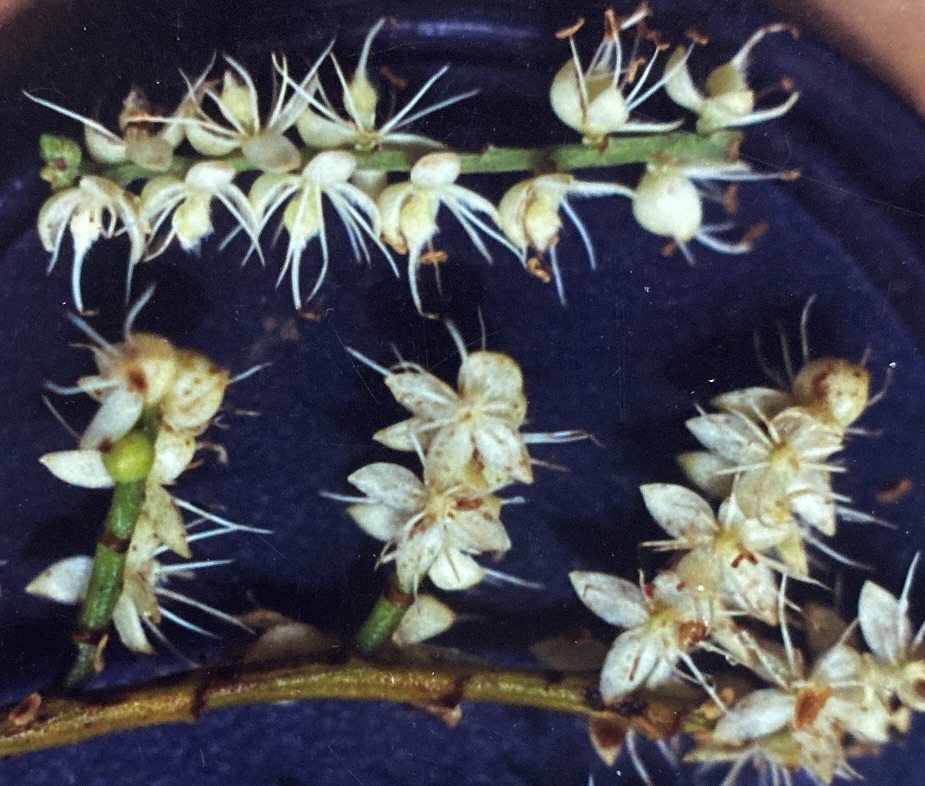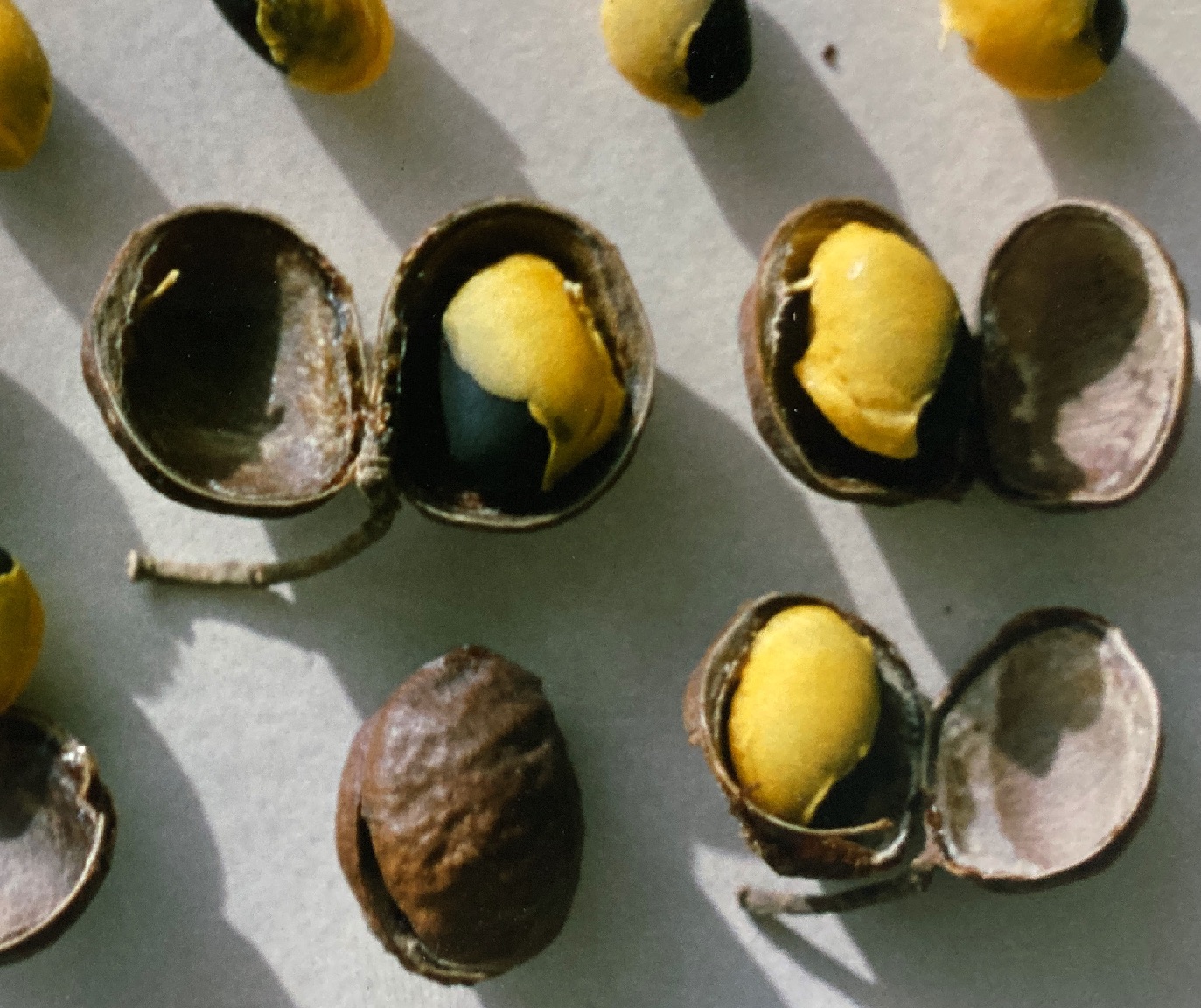Copaifera aromatica Dwyer
CAMÍBAR
Tree: Occasional evergreen emergent tree (40 m) of immense proportions. Camíbar is one of the relatively few trees that is classifiable as an emergent for it routinely reaches heights that project its crown well above the average level of the forest canopy. In terms of crown diameter, trunk circumference, height and sheer mass, Camíbar ranks among the three or four largest trees to be found in Manuel Antonio National Park. Superlative in every respect, this tree is also notable for the strong and penetrating, camphor smell emitted by its fruits and the beauty and artistic grace of its leaves. Camíbar is a primary forest species found growing on moist soils located on hills and ridges as well as in valleys.
Description: Camíbar has a mostly cylindrical, straight and columnar trunk (exceeding 1.2 m in diameter in large individuals), occasionally possessing stout, low, rounded buttresses. High above the surrounding forest, the bole supports thick limbs that give way to a multitude of fine twigs, forming a wide, hemispherical or flattened crown. A nearly continuous shell of fine leaflets, arranged in a single, tenuous layer, complete the open Camíbar canopy. Distinctively reddish or orange in color, Camíbar bark is relatively smooth and it makes this tree stand out from surrounding vegetation. In the oldest and largest specimens (>1 m), the bark on the lower bole becomes gray, rough, and vertically fissured, as the outer, smoother cortex is shed in thick, rectangur strips. Camíbar has very characteristic and memorable leaves (20 cm by 9 cm) that allow its rapid identification. Each is compound, paripinnate, alternate, and made up of eight to twelve asymmetrical leaflets. The leaflets (6 cm by 2.5 cm) are elliptical but strongly falcate (forward-curving) in shape, tapering to a sharp drip-tips. Some amount of leaf-folding is evident in this species at night. Trees shed and then regenerate their entire crown of foliage sometime between late January and May, remaining bare only briefly.
Great numbers of small, white flowers (4 mm) are borne on large, frond-shaped axillary panicles. Each flower consists of four narrow petals, eight stamens, and a single, wide and flattened pistil. During peak activity, these blossoms whiten the entire crown and Camíbar trees suddenly become visible from a distance, amid the jumble of forest vegetation that lines the ridges and hills surrounding Manuel Antonio. Flowering occurs sporadically – though simultaneously – from late June until October, though most frequently in August.
The fruit (3.5 cm) is a coin-shaped, dehiscent woody pod with a central bulge. Splitting longitudinally, each reveals a bright yellow aril that covers three-quarters of a single, round, glossy black seed (1.5 cm). Also within the pod is a small amount of thick, clear, odorous resin – smelling strongly of camphor. During their development, large quantities of immature fruits are usually aborted and can be found on the ground beneath Camíbar crowns. Harvests occur over the course of about a month, sometime between November and March. These variably timed and unsynchronized events do not occur annually, with individual trees producing large harvests every three or four years. Seeds germinate at the beginning of the next rainy season.
Similar Species: Camíbar is unique in possessing compound leaves with multiple (more than two) highly falcate leaflets. Only Myrcianthes fragrans (Guayabon) and Terminalia oblonga (Surá) possess similar, pale-colored bark to that of Camíbar, however theirs exfoliates in paper-thin sheets and is much smoother. These former species also have simple leaves.
Natural History: When in flower, the Camíbar crown is heavily visited by insect pollinators, particularly bees and wasps. This tree’s fruits attract birds with their brightly-colored, fleshy arils. Unlike most forest trees, Camíbar foliage folds at night.
Uses: Camíbar trees have brownish-red wood that has been employed in construction. Its thick, aromatic resin is used in traditional medicine (Holdridge & Poveda, 1975).
A Camíbar relative, sharing the same genus and found growing in the Brazilian Amazon, reportedly produces a hydrocarbon-rich sap that can be placed directly in the gas tanks of diesel engines and used as a clean-burning natural fuel (Plotkin, 1993). According to this source, mature trees produce about ten gallons of the sap per year. This presents the possibility of maintaining standing forests of Copaifera trees to meet local fuel demands, eliminating the need for costly petroleum imports and polluting refineries.
Distribution: In Manuel Antonio, Camíbar is found in all primary forest habitats with the exception of the extreme coastal zone. However, it is most abundant along the ridges and hilltops that surround the park. Camíbar is also known from Punta Leona and Corcovado National Park in Costa Rica. The species has a very limited range, being endemic to the southwestern corner of this country and part of Panama.
Photos: Tree Trunk Trunk2 Leaf Flower Flower2 Fruit Seedling




